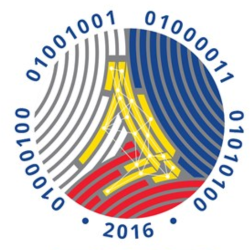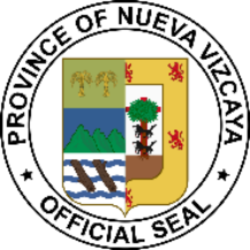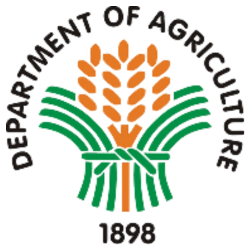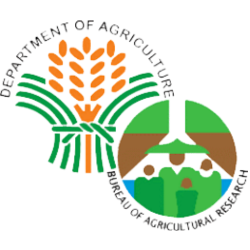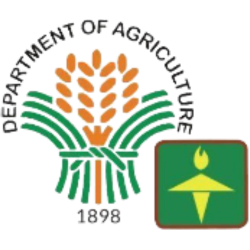Em-composting and Hedgerow Planting for Upland Organic Rice of Nueva Vizcaya, Philippines
The Nueva Vizcaya State University (NVSU), one of the four state universities of the Philippines in Cagayan Valley, started implementing its climate change program in 2013 with funding support from the Commission on Higher Education. The program consists of seven project components focused on developing sustainable agricultural production systems for climate change vulnerable areas of Nueva Vizcaya. A portion of the project component involving organic rice, vegetables, and bananas selected three rice farmers in the rainfed uplands of Buyasyas Village in the north-east of Sta. Fe, Nueva Vizcaya. The site is at 900 m above sea level with about 30 hectares of rainfed lands planted to traditional rice cultivars.
The study profiled the three rice farmer cooperators and their production practices for traditional rice cultivars. The study also showcased and facilitated the use and on-farm production of effective microorganism (EM) compost being promoted by NVSU and reinforced knowledge of farmers on soil conservation in hilly lands through hedgerow planting of an introduced pegionpea breeding line ICP 7035 from the International Crop Research Institute for the Semi-Arid Tropics (ICRISAT).
After a cycle of rice production in the demonstration farms, the initial application of EM compost in selected portions enhanced soil fertility and indicated improved grain filling in Mindoro, a pigmented rice cultivar produced by farmer cooperators. The training on biofertilizer production guided farmers in establishing their own composting shed and starting their on-farm EM compost production. Hedgerow planting of ICP 7035 was adopted which provided protection against soil erosion and gave farmers fresh edible seeds. The paper reports significant findings of the study and its implications to climate change resilience and countryside development.
Keywords: climate change, effective microorganisms (EM), traditional rice cultivars
Citation (APA): Sana, E. A., Dumlao, F. S., & Lunag, A. B. (2015). EM-composting and hedgerow planting for upland organic rice of Nueva Vizcaya, Philippines. NVSU Research Journal, 2(2), 5-11.
Clonal Propagation of Lubeg (Syzygium Lineatum) Using Stem Cuttings in Different Rooting Media
Nursery experiment on clonal propagation was conducted using indigenous species of Lubeg (Syzygium lineatum). This species has multiple uses and a potential crop for upland rehabilitation. Stem cuttings were collected from seedlings of Lubeg (Syzygium lineatum) and observed for the formation of adventitious roots. Rooting of stem cuttings was done using different rooting media such as sand and coir dust (T1), sand and charcoal (T2), sand and vermicompost (T3), and sand and rice hull in 2:1 ratio by volume. The following parameters were used: Percent survival, percent sprouting, percent rooting, length of sprouts, length of adventitious root and number of adventitious roots produced to assess the rooting of the two species in different rooting media.
Observation on the rooting of the species revealed that the different rooting media influenced the rooting of Lubeg. Lubeg macropropagation using stem cuttings was found feasible. Lubeg cuttings root formation was affected by the rooting media used except for the length of cutting sprouts. Among the four media, Lubeg cuttings grown in sand and coir dust gave higher percent survival, percent rooting, percent sprouting, length of roots and number of adventitious roots. From the results, Lubeg cutting’s best rooting was achieved using sand and coir dust and therefore, is recommended for use on rooting the said species using stem cuttings collected from seedlings.
Keywords: stem cuttings, macropropagation, indigenous tree species, sand and coir dust, rooting media, percent survival
Citation (APA): Castañeto, Y. T. & Castañeto, E. T. (2015). Clonal propagation of lubeg (syzygium lineatum) using stem cuttings in different rooting media. NVSU Research Journal, 2(2), 12-16.
The Effects of Agroforestry Practices on the Soil Properties of Barobbob Watershed, Nueva Vizcaya, Philippines
The study was conducted in Barobbob Watershed, Sitio Pawac, Barangay Masoc, Bayombong, Nueva Vizcaya, Philippines. The study assessed the effects of the four dominant agroforestry practices on the condition of the soil such as physical characteristics, soil erosion and rate of infiltration. The study also assessed the relationship of the amount of rainfall that prevailed during the time of the study to the generated values of runoff, sediment yield and sheet erosion.
Experimental plots were established in the different agroforestry practices and in the residual forest to measure the amount of erosion and rate of infiltration. Among the agroforestry practices, multistorey had better effects on the soil condition of the watershed.
Keywords: agroforestry, runoff, sediment yield, soil erosion, infiltration
Citation (APA): Rodriguez, R. S. (2015). The effects of agroforestry practices on the soil properties of Barobbob watershed, Nueva Vizcaya, Philippines. NVSU Research Journal, 2(2), 17-31.
Equity of Student Right to Education as Perceived by College Students Across Gender, Ethnicity, Religion and Socio-economic Status, and Its Relationship to Students’ Academic Performance
A learning institution should provide equal opportunities to each student to enhance and maximize their learning potential without any feeling of prejudice. Discrimination in the school is one of the factors that could affect the individual’s performance. There were several sources of discrimination such as gender, ethnicity, religion and socio-economic status. These suppress the students’ right to education and affect their potential to grow and develop.
The descriptive – correlation design was used in order to profile the respondents as to their academic performance across gender, ethnicity, religion and socio-economic status. Likewise, to establish relationship of the students’ perception on the equity of the right to education as influenced by the profile variables to their academic performance. The study was conducted in one of the State Universities in Northern Philippines with a sample population of 60%, all of which are fourth year students, proportionately distributed to the colleges. A validated research instrument was used; data were tabulated and analyzed using cross tabulation, analysis of variance and univariate analysis.
The study found out that gaps among students as to their perception to students’ right to education as affected by their gender, ethnicity, religion and socio-economic status existed. The discrimination experienced by the students from other students of opposite gender, different ethnicity, religion and socio-economic status affected their academic performance. Likewise, discrimination experienced from university office staffs in using facilities such as laboratories, library and recreational activities, and even in the university dormitories and nearby boarding houses were found to affect the students’ academic performance.
Keywords: academic performance, students’ right to education, discrimination, school biases, univariate analysis, Philippines
Citation (APA): Valderama, J. S., Cauilan, F. D., Pascual, M. J., & Oligo, L. L. (2015). Equity of student right to education as perceived by college students across gender, ethnicity, religion and socio-economic status, and its relationship to students’ academic performance. NVSU Research Journal, 2(2), 32-46.
Value Chain Analysis for Mandarin in Nueva Vizcaya, Philippines
Mandarin production and marketing have developed very significantly in recent years. However, the industry in Nueva Vizcaya, Philippines, a much heard mandarin producer, was not able to develop by world standard. There is definitely a need for government to intervene. The value chain analysis approach is used in this study to provide direction for growth and development of the mandarin industry by analyzing opportunities and constraints, identifying viable interventions, formulating strategies and setting competitiveness directions based on development thrusts of players, and stakeholders. Data were collected from different agencies and by interviewing key players in the mandarin supply chain. Opportunities and constrains were identified. Recommended interventions are capability building of farmer associations, forming farmers into production clusters for standardized production and marketing practices and management by using a package of technology, and continuous R and D on the enhancement of the mandarin chain from input provision to post harvest practices.
Keywords: agriculture, mandarin production and marketing, value chain analysis
Citation (APA): Sarmiento, G. P. (2015). Value chain analysis for mandarin in Nueva Vizcaya, Philippines. NVSU Research Journal, 2(2), 47-51.
Tribal Leaders’ Capability and the Effectiveness of the Certificate of Ancestral Domain Title as an Empowerment Tool in the Ancestral Domain of the Ayangans in Nueva Vizcaya, Philippines
The study aimed to determine the relationships between the tribal leaders’leadership capability and the effectiveness of the Certificate of Ancestral Domain Title (CADT) as an empowerment tool in the ancestral domain of the Ayangans. The study was undertaken in the selected barangays of the three municipalities of Nueva Vizcaya where the Ayangan has established their ancestral domain. There were 308 households who served as the respondents of the study selected through systematic random sampling. The result indicated tribal leaders were moderately capable in performing their executive, legislative and judicial leadership functions. Likewise, the CADT was moderately effective as an empowerment tool in the AD of the Ayangan. The data further denoted that the leadership capability of the tribal leaders and the effectiveness of the CADT as an empowerment tool are significantly and positively correlated inferring a direct relationship between the variables.
Keywords: certificate of ancestral domain title, leadership capability, empowerment, Ayangan
Citation (APA): Razalan, M. T. (2015). Tribal leaders’ capability and the effectiveness of the certificate of ancestral domain title as an empowerment tool in the ancestral domain of the Ayangans in Nueva Vizcaya, Philippines. NVSU Research Journal, 2(2), 52-64.
Students’ Motivation, Learning Strategies, and Proof Construction Skills in Basic Set Theory: a Correlation Analysis
The study analyzed and correlated student’s motivation, learning strategies and proof construction skills in Basic Set Theory. The respondents of the study were the BS Mathematics fourth year students (N = 215) of the Bulacan State University taking up Real Analysis for the Academic Year 2014-2015. The study adopted the descriptive correlation design. To measure student’s proof construction skills, results of the written responses on the Proof Test was analyzed based on teacher – made rubrics. Through the use of the correlation method as a type of quantitative analysis, the researcher explored the existence of significant relationships among the variables mentioned. Among the factors of Motivation, the students posted high level of motivation in Value and Expectancy constructs, however of the Average level only in the Affect construct. The overall learning strategies of the students were described to be of average level with the three factors - Metacognitive Strategies, Non-Informational Resource Management Informational Resource Management falling under the same category. Whereas cognitive strategies were classified as high. On the proof construction results, students performed poorly considering bulk of their scores are in the lower half of the total range. Analysis showed only students’ motivation has significant, positive relationship with students’ learning strategies.
Keywords: Mathematics education, students’ motivation, learning strategies, proof construction skills, qualitative - quantitative methods of research, Philippines
Citation (APA): Santos, E. M. (2015). Students’ motivation, learning strategies, and proof construction skills in basic set theory: A correlation analysis. NVSU Research Journal, 2(2), 65-75.



















